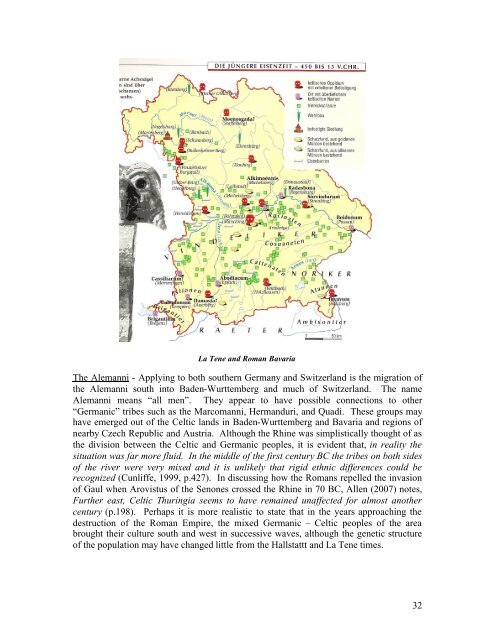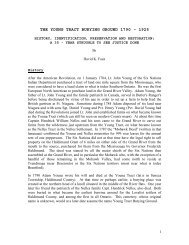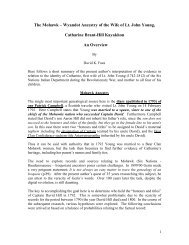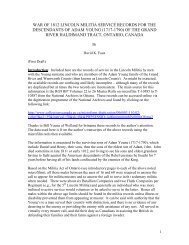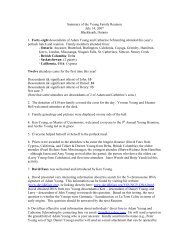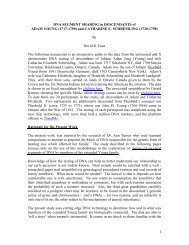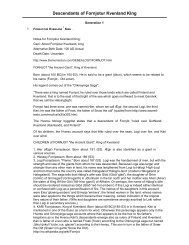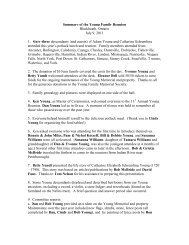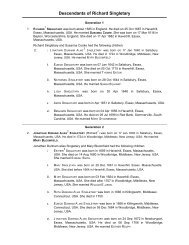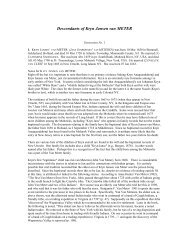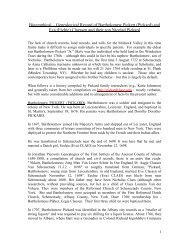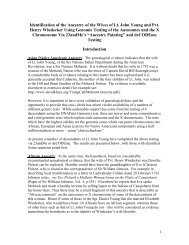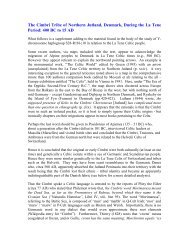La Tene and Roman BavariaThe Alemanni - Applying to both southern Germany and Switzerland is the migration ofthe Alemanni south into Baden-Wurttemberg and much of Switzerland. The nameAlemanni means “all men”. They appear to have possible connections to other“Germanic” tribes such as the Marcomanni, Hermanduri, and Quadi. These groups mayhave emerged out of the Celtic lands in Baden-Wurttemberg and Bavaria and regions ofnearby Czech Republic and Austria. Although the Rhine was simplistically thought of asthe division between the Celtic and Germanic peoples, it is evident that, in reality thesituation was far more fluid. In the middle of the first century BC the tribes on both sidesof the river were very mixed and it is unlikely that rigid ethnic differences could berecognized (Cunliffe, 1999, p.427). In discussing how the Romans repelled the invasionof Gaul when Arovistus of the Senones crossed the Rhine in 70 BC, Allen (2007) notes,Further east, Celtic Thuringia seems to have remained unaffected for almost anothercentury (p.198). Perhaps it is more realistic to state that in the years approaching thedestruction of the Roman Empire, the mixed Germanic – Celtic peoples of the areabrought their culture south and west in successive waves, although the genetic structureof the population may have changed little from the Hallstattt and La Tene times.32
R-M269 percentages – Unfortunately when a German sample is reported it does notgenerally come with any regional designation. About 50% R-M269 would be typical.Kayser et al. (2005) sampled widely in Germany, genotyping to M173-R1* - as usual, theassumption is that most of these would be R-M269. The percentages vary from 32% inRostock (23% in Berlin), to 55% in Freiburg (in the south, near Switzerland).R-U152 predictions – The Myres et al. (2007) study included a sample from Germany,but there was no indication as to any regional structure that may have been present. Here43% were R-U106. It is expected that there will be a significant division in thehaplogroup structure as one travels from the North Sea to the Alpine region. The Frisiansample probably hints at what one might expect in the northern tier (in other wordspredominant R-U106), the rest largely R-P312/S116*, some R-L21/S145*, and perhapsonly a thin scattering of R-U152. However as one approaches the Alps, the territory ofthe La Tene Celts in Bavaria and Baden-Wurttemburg, it is expected that a at least onethird of R-M269 will be R-U152.R-U152 findings – An increasing number of men with German heritage have been testedby EthnoAncestry and FTDNA as well as 23andME and deCODEme, but all of thosewho tested U152 positive are from the Baden-Wurttemberg area and immediatesurrounds in Bavaria and the Frankfurt area as far as the Saarland – Triers area plusHesse and Thuringia, and none to date from the northern half of the country. The datasuggest a line from Cologne or Koblenz south that is Celtic – precisely what is seen in theKoch (2007) atlas of the Celtic world.It is possible, as noted above, that southern Germany was the place of earliest settlementof U152, due to the fact that considerably more L2 ancestral (with high diversity ofhaplotypes) is found here (about one third of the total). The association between L2negative and DYS492=14, however, needs to be confirmed with larger samples.SWITZERLAND: This country is situated right in the middle of the migrating Gaulsand Bohemians, and the strongly Celtic Northern Italy. In the words of Kruta (1991),Switzerland, serves as a kind of revolving platform between the Celtic Transalpine andCisalpine worlds (p.208), giving it a unique position in the Celtic world. It also becamethe home of one of the most numerous and powerful Celtic tribes, the Helvetii. TheHelvetii, or at least some of the tribe, had originally lived beyond the Rhine (Allen, 2007,p.159) but were forced into Switzerland by virtue of the pressure of German-speakingpeoples moving from the northeast, and at some point had amalgamated with some of theBoii and others. Many hundreds of thousands, in the time of Caesar, destroyed theiroppida and villages in preparation for a migration to the west to the lands of the Santoneson the Atlantic coast. Caesar got wind of the plan (a census of those involved in themigration has survived) and sent all back to their Alpine homes. Allies named by Caesarinclude, the Tulingi, the Latobrigi, the Raurici and the Boii (Collis, 2003, p.107). It islikely that their descendants reside there to this day, and if the Alamanni and Suebi ruledthe area by elite domination rather than population replacement then the Celtic elementwill be the most numerous.33


